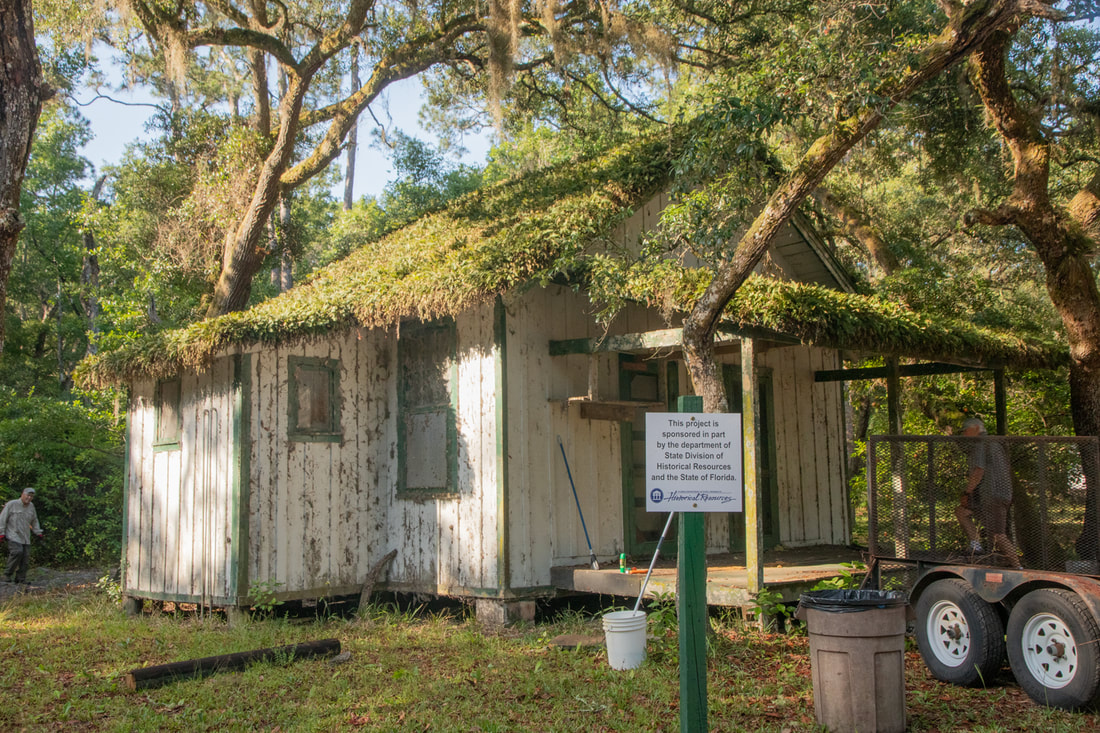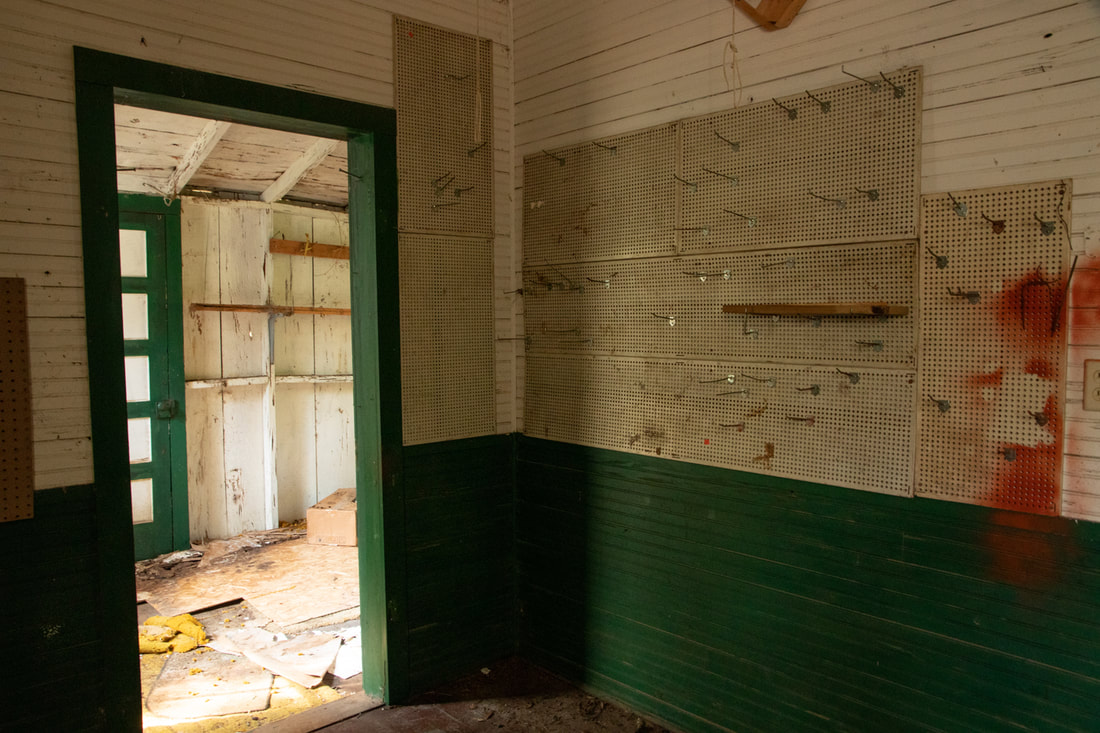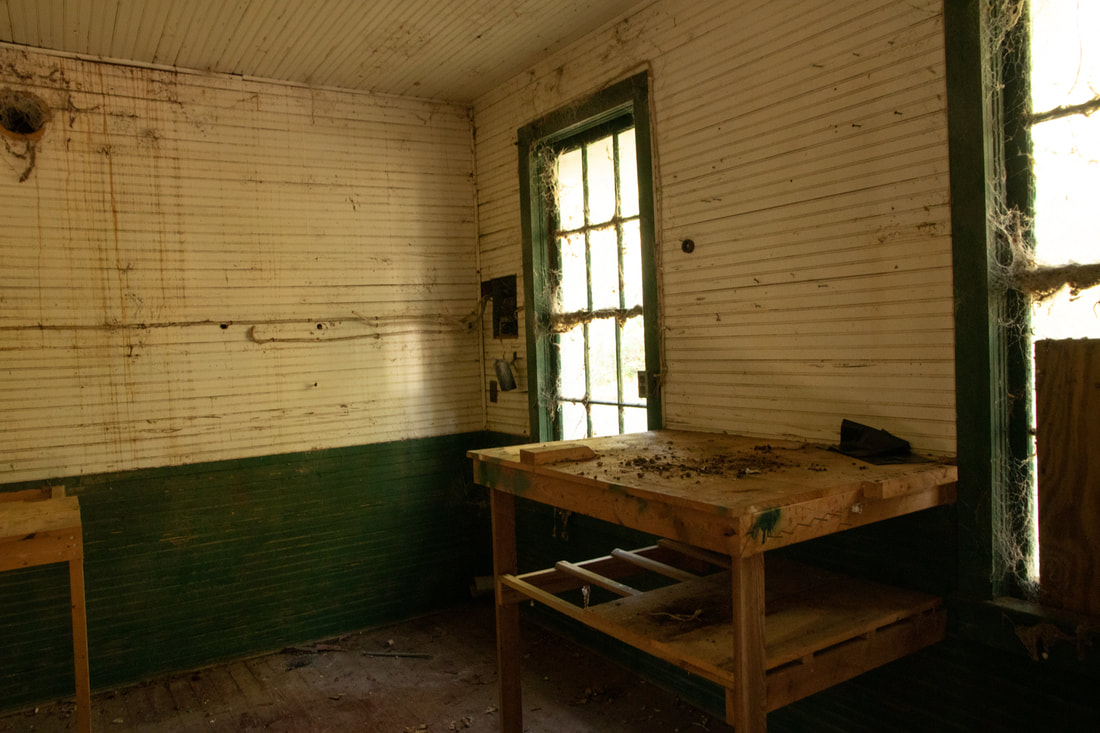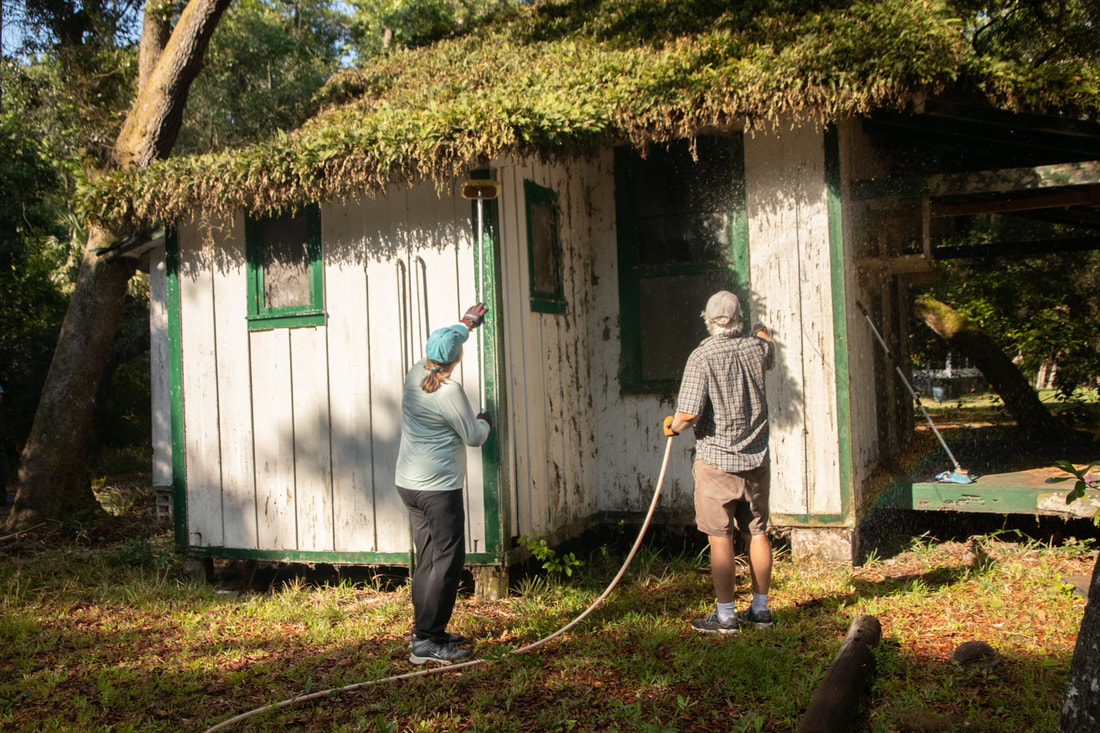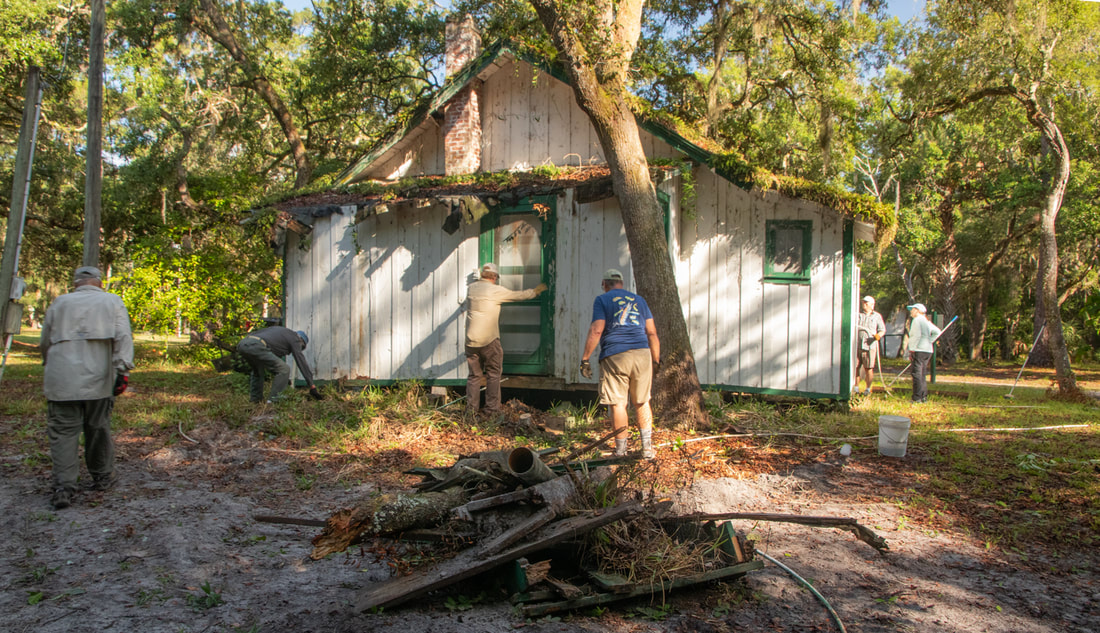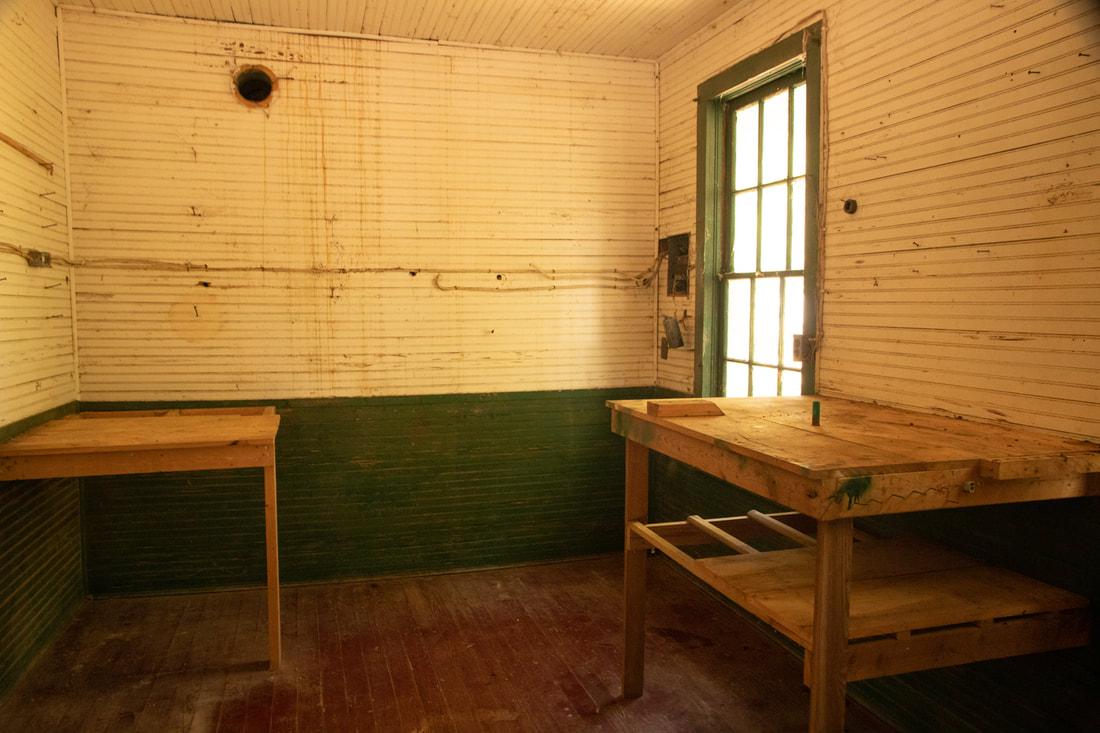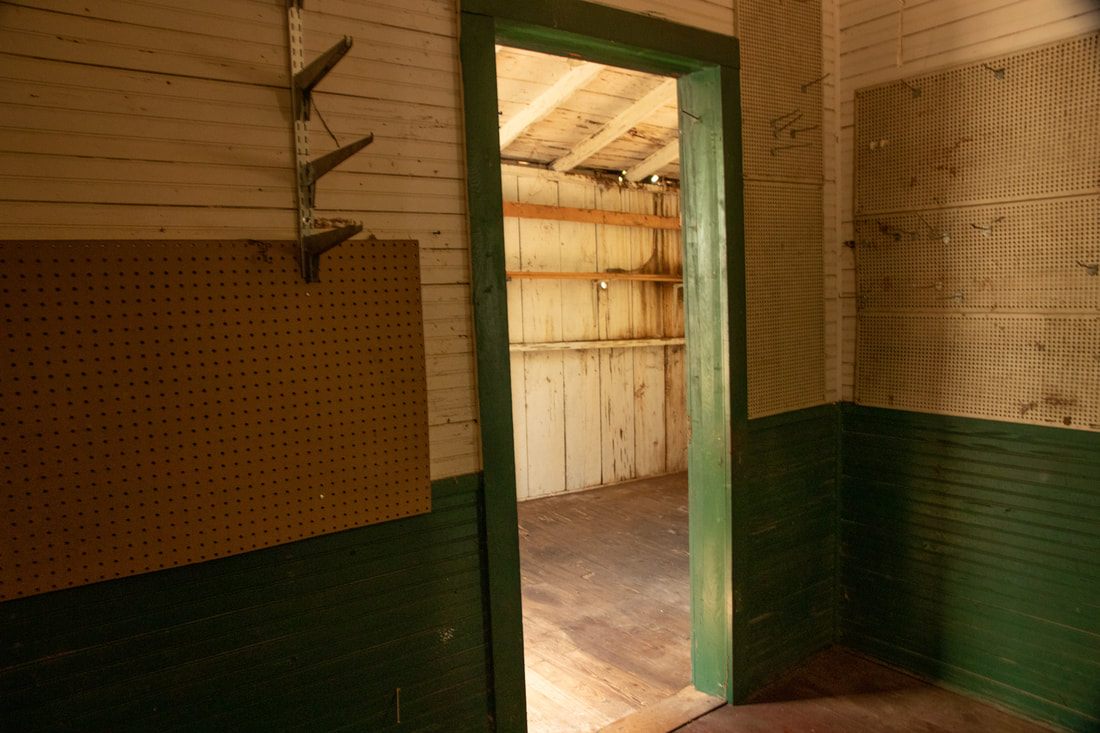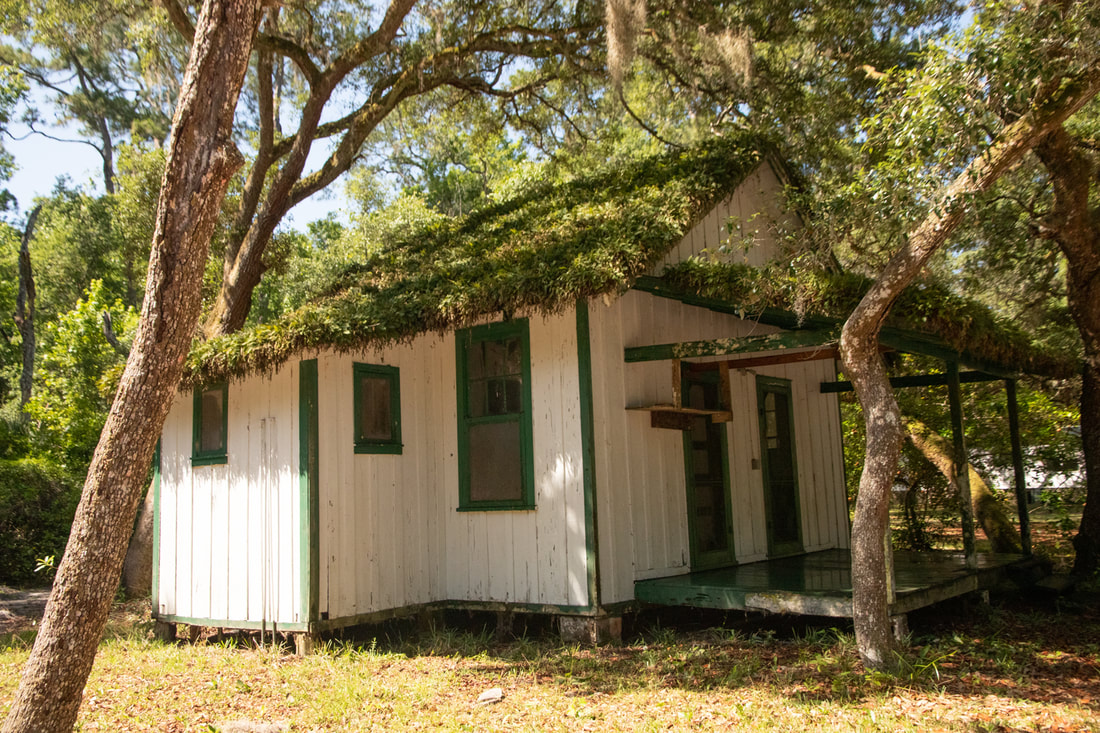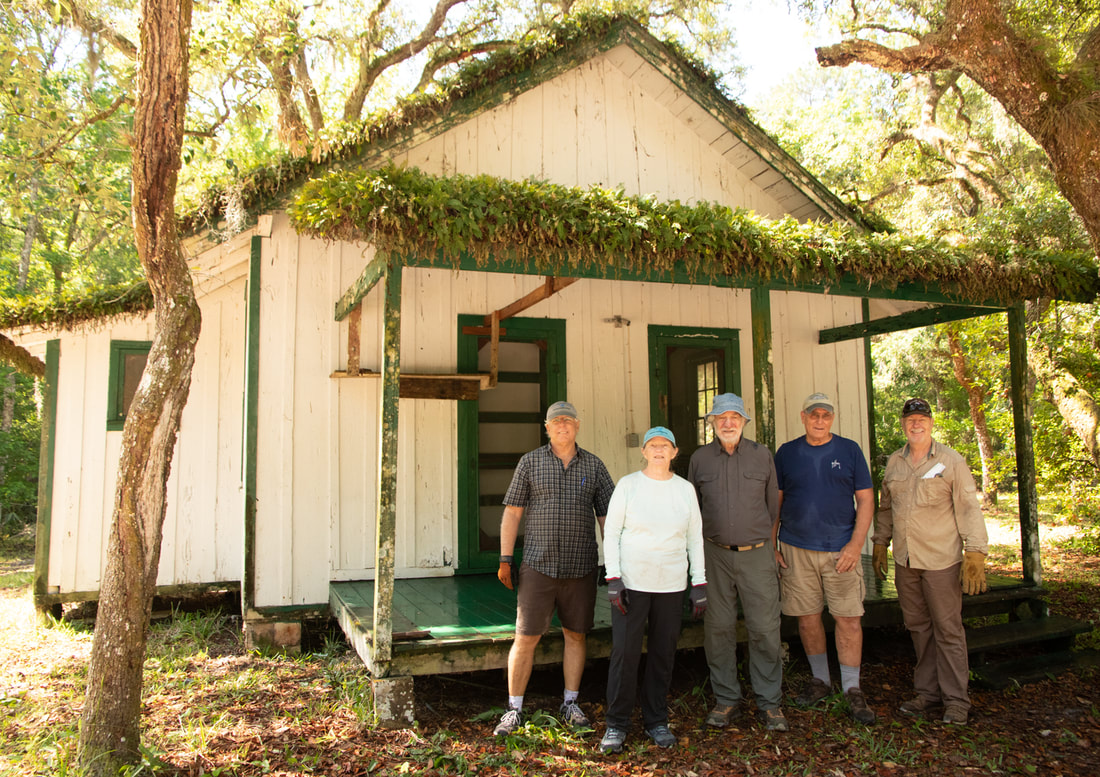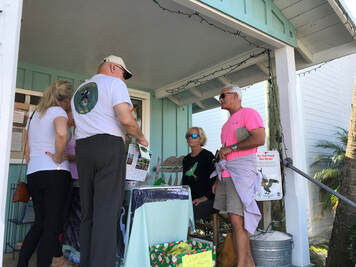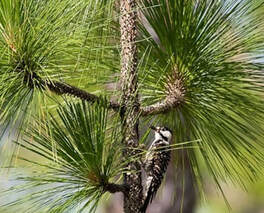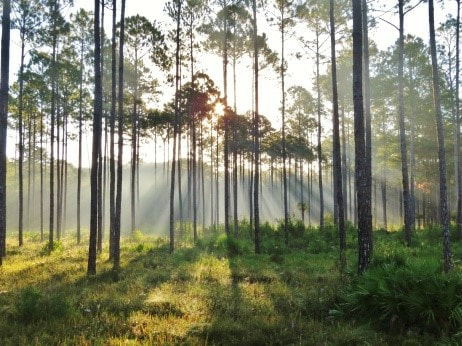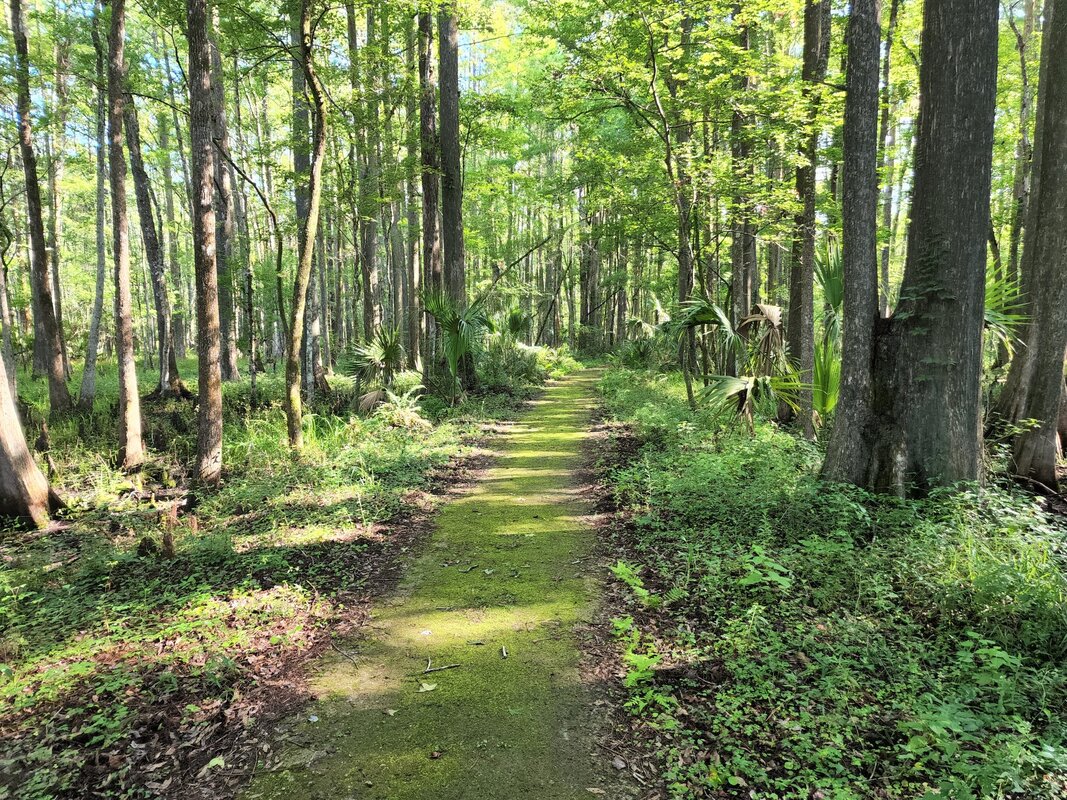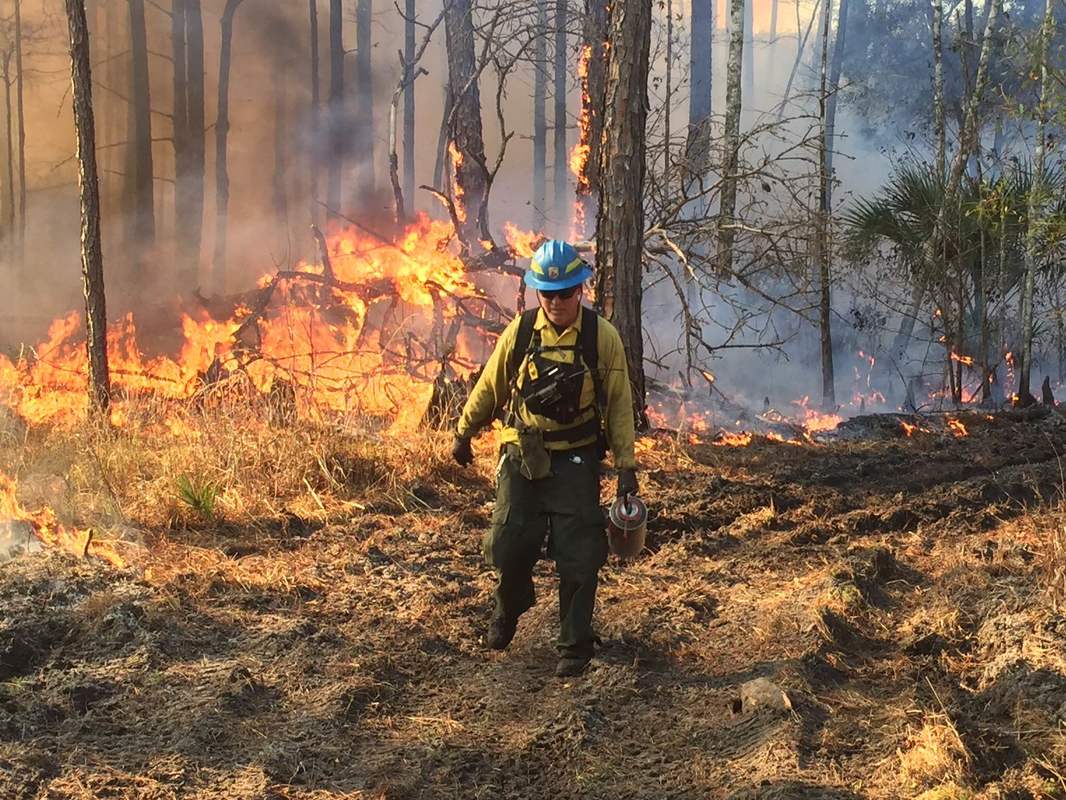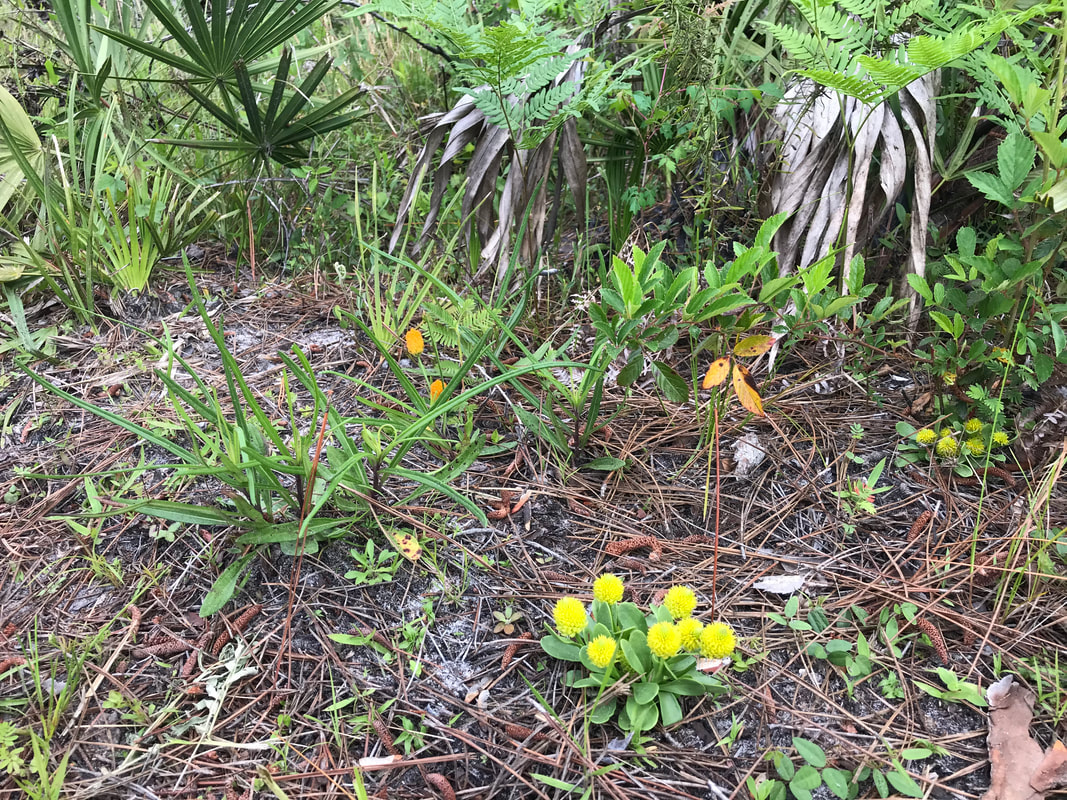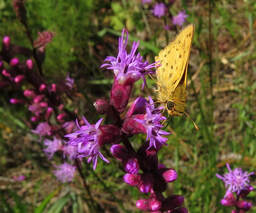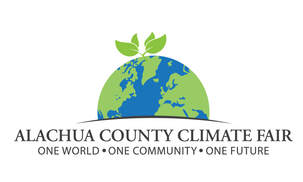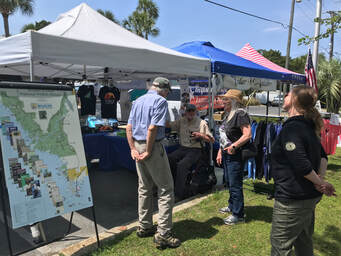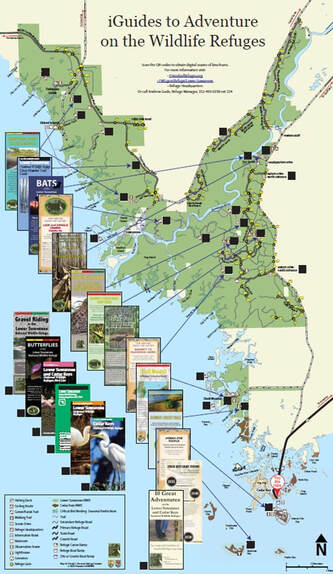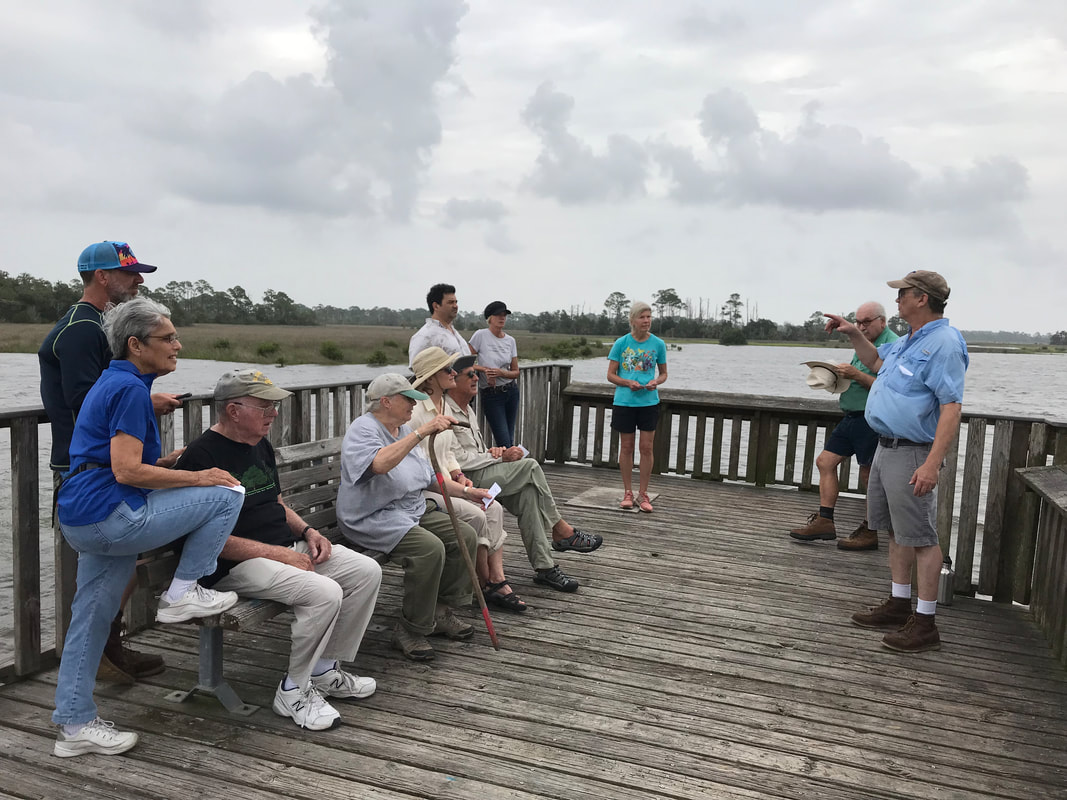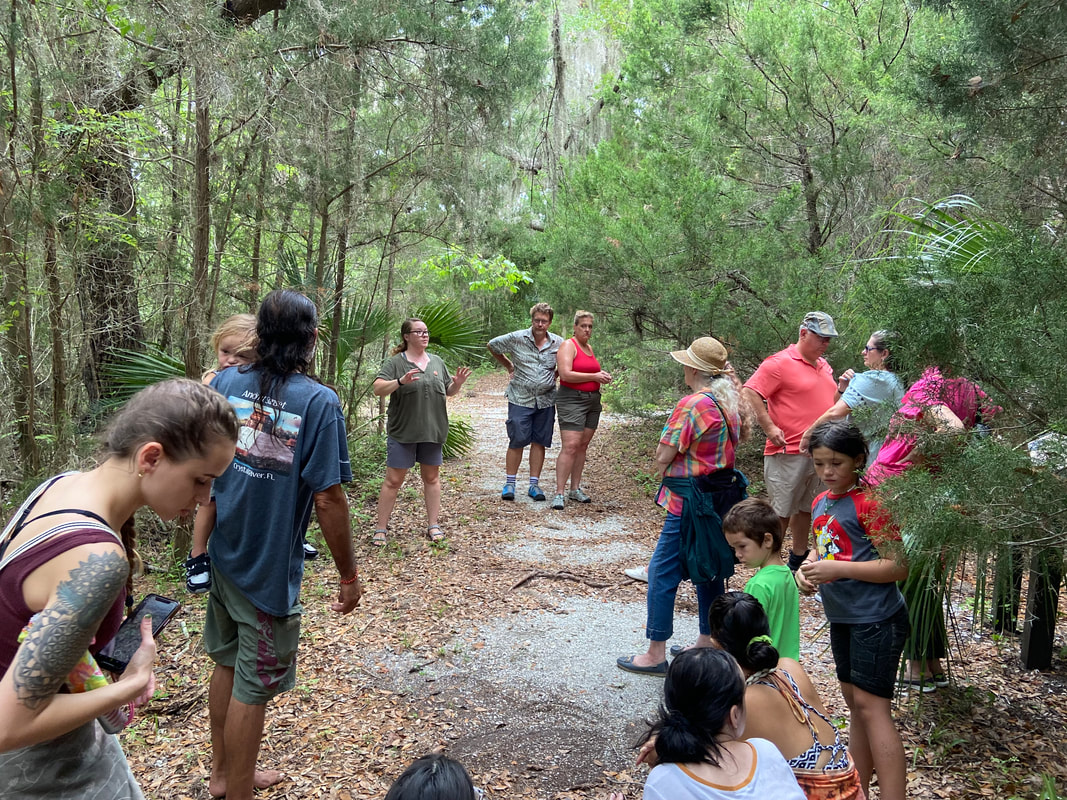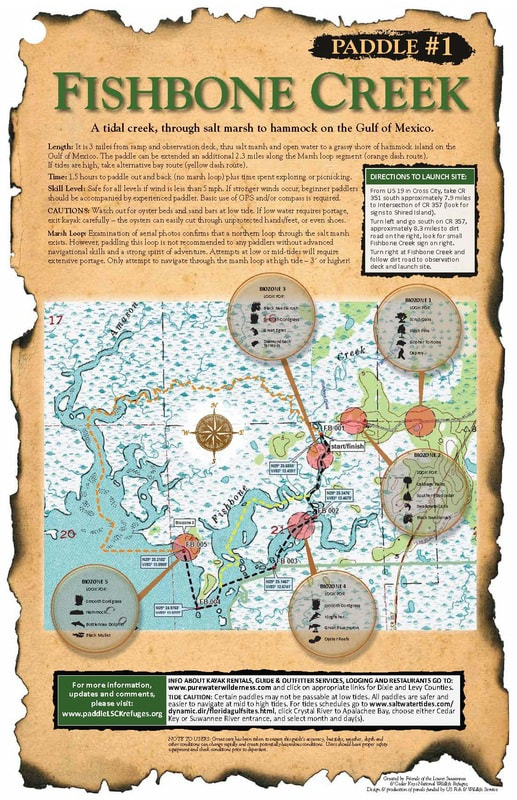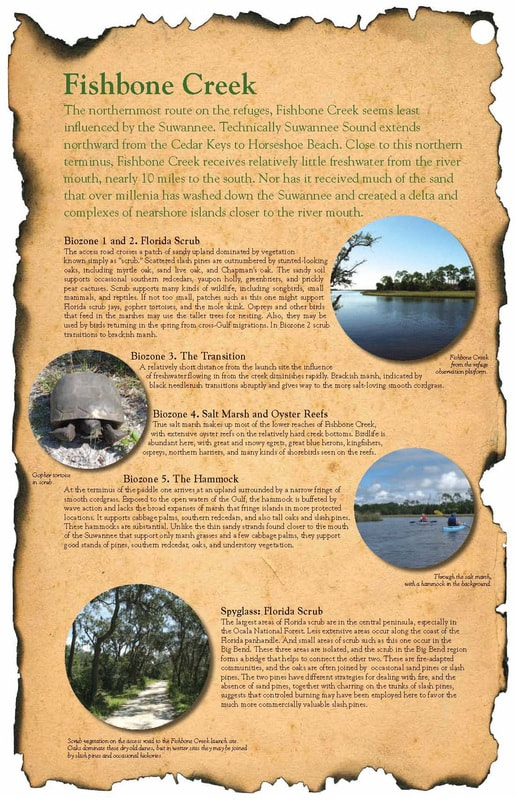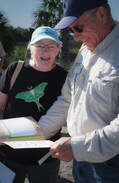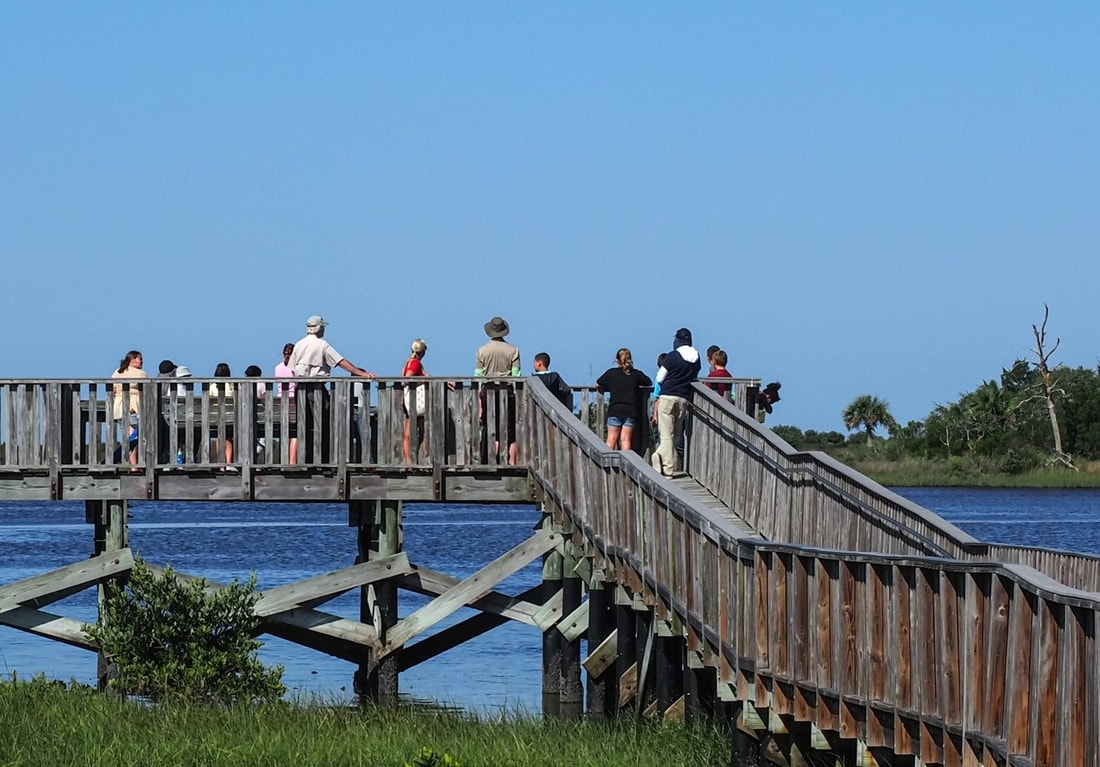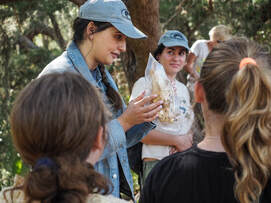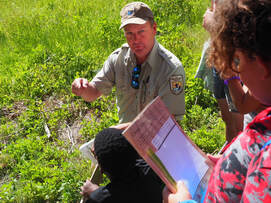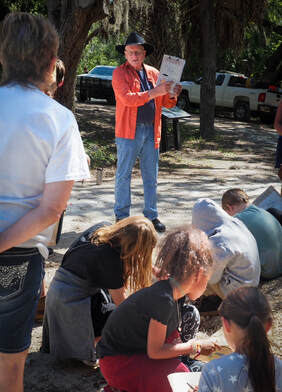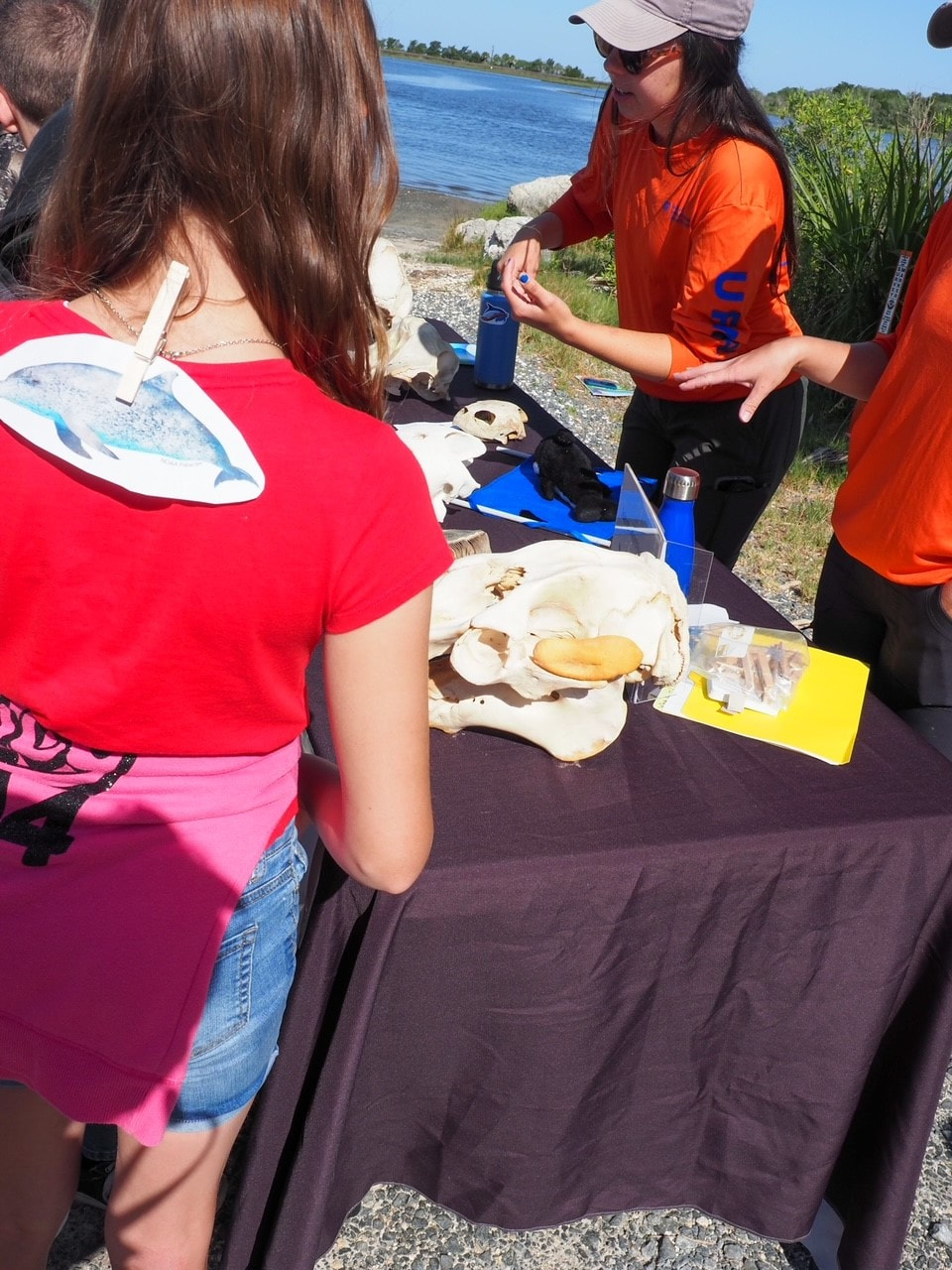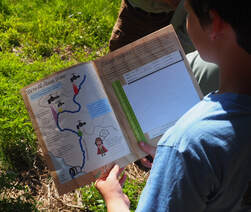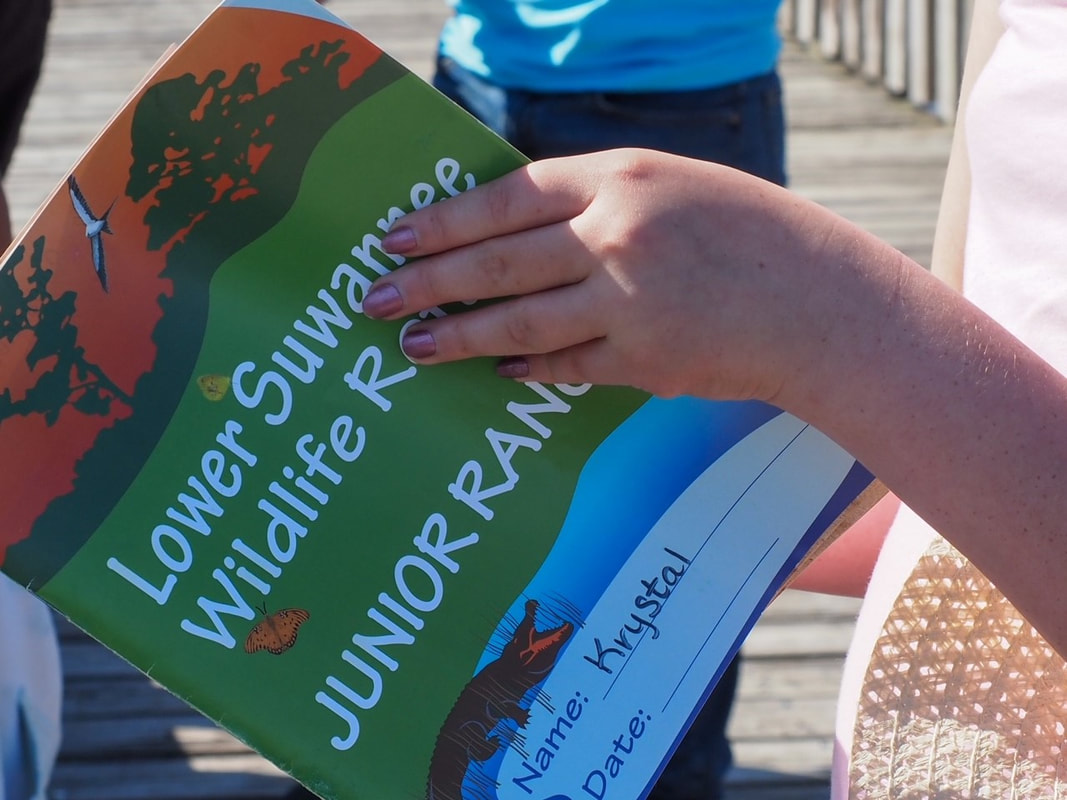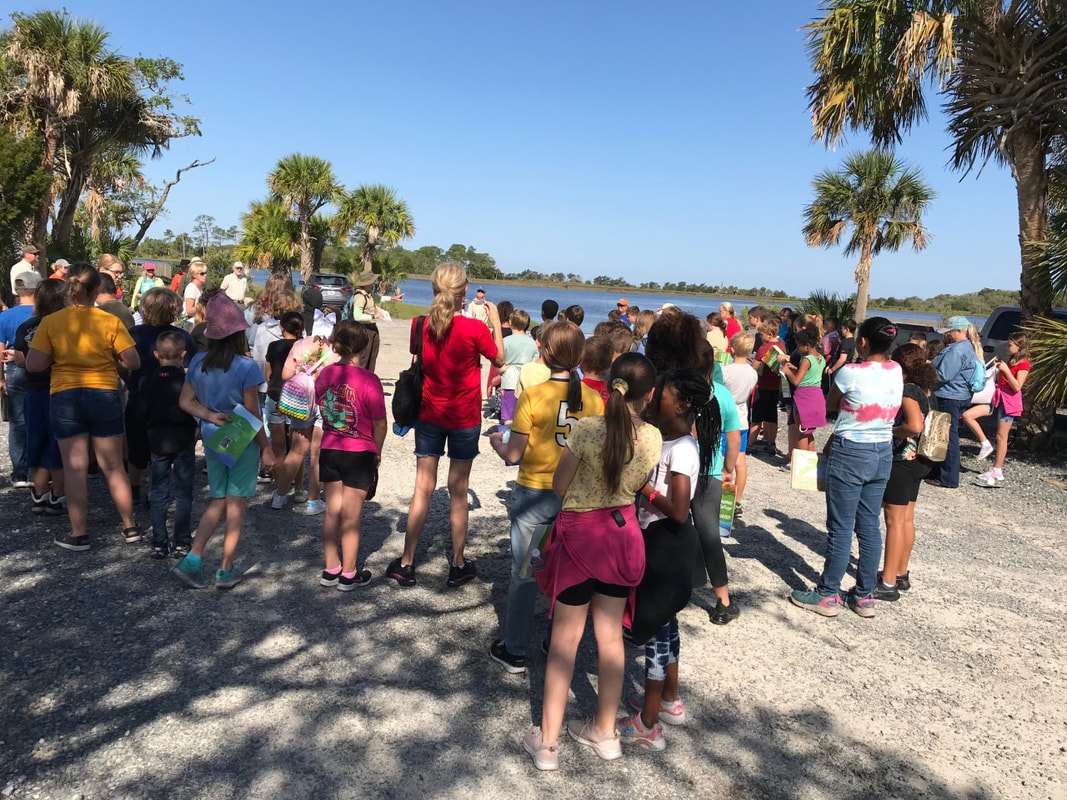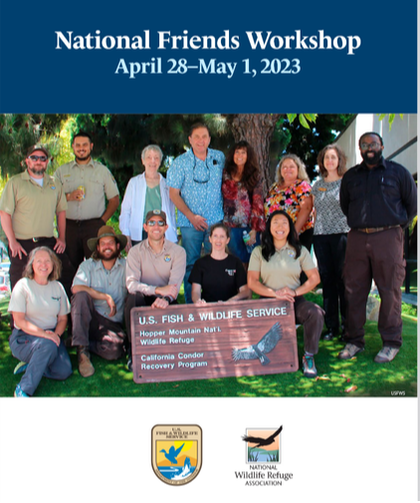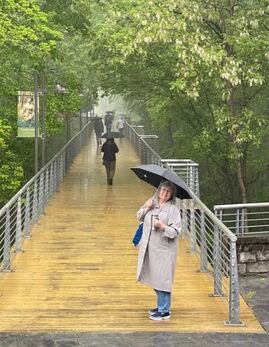|
The biting insects took a morning off, and a volunteer crew made the most of their absence to clean up the Cook's House. The architects will be visiting to gather additional on-site data for the next phase of the plan to weatherproof the building. Friends member Ann Kamzelski shares the photos below that she took during the project.
0 Comments
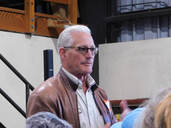 Andrew Gude LS&CKNWR Manager Andrew Gude LS&CKNWR Manager Following is a summary of Andrew's notes for the Friends' May board meeting. Lots going on at the Refuge. Staff are rehabbing compromised culverts on a few backwoods roads as the ground is finally dry enough to do the work. This work is north of the western leg of the Barnett Creek Trail. Recovery from this work may take awhile due to the impact from the heavy equipment needed to do the work. The area is slated for future forestry restoration efforts. Work also continues on Seahorse Key dock rebuilding. The work is expected to continue through the summer. 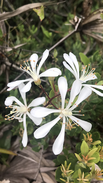 Nature Drive Tar Flower Nature Drive Tar Flower Andrew summarized the longleaf pine restoration work that is starting in Dixie County. A separate project involving 70 miles of hazard fuels from encroaching roadside and overhead vegetation will be awarded in the near future. Refuge roads serve as fire breaks for burn units, buffers for Wildland Urban interfaces and access to fire equipment. Work is expected to start this summer and be completed in early 2024. These efforts along with the ongoing maintenance of the Refuge have been a boon to pollinator habitat - much to the delight of many including our butterfly experts. See our previous May 11th blog post for more information on these projects. 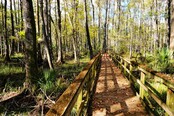 River Trail Boardwalk River Trail Boardwalk Andrew welcomed the summer to fall 2023 Resident Camper Volunteers, Rex and Claudette Tilley, whom he reports are fitting in nicely and have already picked up where Rick and Robin left off. Speaking of highly valued volunteers, three Youth Conservation Corps students are being interviewed to start work in early June. One of their first assignments will be to help rebuild the River Trail Boardwalk that was damaged in a recent storm. For the hunters and other enthusiasts, quail call surveys have begun, and staff are reporting hearing more than last year. Although quail are not hunted on the Refuge, everyone is pleased to hear more of them calling. 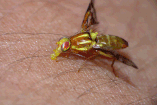 Florida yellow fly Florida yellow fly Unfortunately the season for the biting flies and other blood thirsty insects has arrived. Andrew warns that if you go for a walk or run at this time of year, you're guaranteed to get your exercise running away from them. Don't forget your repellent! April was a busy month for outreach - with our two-day booth at the art festival where hundreds saw our booth and materials and many of those stopped in to purchase items and gather info. Later in the month, volunteers staffed the Friends' table at the Chamber on the 15, 22, and 23. Visitor interactions ranged from 15 on a quiet day to over 45 on busy weekends. What's always interesting is how many visitors, or even area residents, don't know the Lower Suwannee Refuge exists and they also may not know that Cedar Keys is a separate Refuge. We have a great need for more volunteers to staff the Chamber table as well as other locations including the River Trail and Shell Mound. The summer heat and critters may discourage some of these woody locations, but the Chamber is a great spot (a nice big fan is available). Please comment if you're interested in volunteering or email us at [email protected]. If you're new at volunteering we will pair you with someone more experienced. We think you'll find it educational and enjoyable.
The Refuge has begun two habitat restoration projects that will also serve as prescribed fire safety and wildfire risk reduction efforts. The first project is a longleaf pine habitat restoration project covering 23 sites in Dixie County east of County Road 349. This restoration project is a site conversion from slash pine to longleaf pine. The longleaf pine once encompassed much of the Refuge before deforestation from logging and the eventual replacement with commercial forest trees such as loblolly and slash pine. The second project is to reduce roadside hazard fuel loads on 70 miles of LSNWR roads. Refuge roads serve as fire breaks for burn units, buffers for Wildland Urban Interfaces, and access for fire equipment while conducting controlled burns and wildfire suppression. The Assistant Forester from the regional office made a recent visit to the Refuge. He has visited a few times in the last 10 years, and commented that restoration efforts over the last 5-7 years are very noteworthy. He suggested the Refuge contract with someone to do vegetation diversity surveys as well as pollinator surveys to highlight the Refuge's restoration strategies.. He was encouraged by the extent and quality of the pollinator habitat and thought that monitoring would help demonstrate the success of the ongoing efforts. While forest health has been the primary goal of restoration efforts, the successes of rejunvenating pollinator habitat has been important to the overall ecological health of the Refuge and a joy to butterfly, bird, insect and wildlife enthusiasts. Friends of Lower Suwannee & Cedar Keys NWRs will participate in the Alachua County Climate Fair on Friday, June 2 from 5pm to 8pm at Camp Cuscowilla in Gainesville. The address is 210 SE 134th Avenue, off of SR 441. The purpose of the Fair is to let residents know about the County's recent Climate Vulnerability Analysis. Many Friends members live in Gainesville and Alachua County. We hope to see them at the Fair, and it would be very helpful to have a few members help at the booth. If you might be able to volunteer, please leave a comment on this post or email [email protected]. At Friends booth, we will share stories with visitors about our Refuges and their role in protecting, maintaining, and enhancing habitats along the Lower Suwannee River and protecting the nesting shorebirds on the Cedar Keys. The Lower Suwannee NWR is a linchpin of the conservation lands along the entire Big Bend of Florida. These lands provide a buffer against hurricanes and storms, and protection from commercial and agriculture development that could make our region more vulnerable to climate impacts.
We will also have information about what visitors can do and see at the Refuges, and some Refuge-related merchandise available. A Summer Solstice Celebration will take place at Shell Mound on Saturday, June 24, 2023.
Friends of Lower Suwannee & Cedar Keys will partner with the Florida Public Archaeology Network and the Florida Paddling Trails Association. The time and activities will be announced here soon. We expect to have guided archaeology walks on Shell Mound and guided archaeology-centered kayak paddles from Shell Mound. Participants will need to provide their own kayaks and equipment. See the post about the 2021 Summer Solstice Celebration here. Friends created a series of 12 paddling trails to provide paddlers with guides to seeing the Refuges from the water. Each guide provides a map and indicates places of ecological and environmental interest that the paddlers might want to note along the trail. The guides are available on this website to be download for free HERE. Seven of the guides are also now part the Paddle the Gulf website, which is supported by the National Oceanic and Atmospheric Administration. Friends member Beth Dieveney, initiated contact between Friends and NOAA. Becky Allee, a senior scientist at NOAA made this happen. Thanks to both Beth and Becky!
On Thursday, May 4, 76 4th graders from Old Town poured off their two school buses into the parking lot at Shell Mound ready for adventure. Over the next several hours, they completed five Learning Stations at Shell Mound:
Six teachers and volunteers from the school, two bus drivers, four members of the Refuge staff, two archaeology graduate students, two Marine Animal Stranding and Rescue biologists, and 13 additional Friends' volunteers worked with the students to help them get to know the Refuge. Having endured hours of abundant no-seeums and having met all the requirements, the students were sworn in by Deputy Refuge Manager John Stark as Lower Suwannee Refuge Junior Rangers and given their badges by Refuge Forester Daniel Barrand, Refuge Engineering Equipment Operators Jason Coates and George Pelt, and the other volunteers. Providing the needed workbooks for this and another possible Junior Ranger Day in June was at the top of Friends Wish List in April. Thanks to Friends member John Douglass for fulfilling our big wish.
In early May, Friends Past President Debbie Meeks and Deputy Refuge Manager John Stark participated in the 2023 National Friends Workshop. It was held at the National Conservation Training Center in West Virginia. One representative from each Friends group around the country was invited, as well as one Refuge staff member from each. About 250 attended. There were 6-8 concurrent sessions to choose from in each 90 minute time block. Debbie's favorite was the Subtle Differences Between Friends and Volunteers, in which they were given tricky scenarios to work through, and she said her head was spinning after the first 10 minutes.
Debbie reconnected with Friends leaders from other refuges whom she had met at the smaller and more select Friends Academy last summer. She and John made new acquaintances who will be excellent networking partners for us in the future. |
Archives
June 2024
|

Friends of the Lower Suwannee & Cedar Keys National Wildlife Refuges
P. O. Box 532 Cedar Key, FL 32625 [email protected] We are a 501(c)(3) nonprofit organization. |
|
